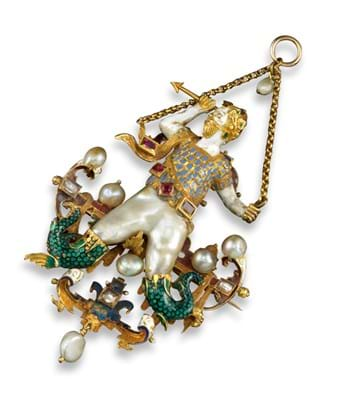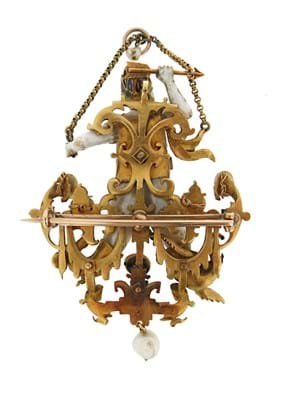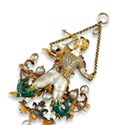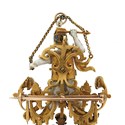The Canning Jewel – a baroque pearl pendant in the form of a merman – was once deemed one of the great treasures of the Victoria and Albert Museum. Given to the museum in 1931 by Mrs Edward S Harkness of Connecticut, it had been acquired at Sotheby’s from the collection of the 6th Earl of Harewood for £10,000 – the equivalent of £600,000 today.
A verbal provenance traced it back to the Medici via the Mughal court and then to the Earl of Canning who had bought it in the aftermath of the Indian Mutiny.
Over the next 50 years the jewel appeared as a masterpiece of Renaissance jewellery in many publications but, as scholarship increased, so did doubts regarding the settings and cutting of the stones. In 1991 the V&A re-catalogued the Canning Jewel as “probably 19th century”.
A very similar jewel was offered at Woolley & Wallis on April 19. Unlike the later copies of the Canning Jewel that were made following its donation to the V&A, this pendant appears to be a near contemporary and depicts Porphyrion, king of the Gigantes. Similarly centred around a baroque pearl, the gold setting features a ruby sash, blister pearls and enamelling to the clothing and features.
Like its more famous cousin, this pendant was once thought to be 16th century in date and was only recently reattributed to the Victorian era. Marielle Whiting, Woolley & Wallis head of jewellery, estimated the jewel according to its current attribution at £4000-6000.
“So few true Renaissance pieces of this quality are known that it is no surprise that it took 60 years for the Canning jewel to be reattributed, and this pendant has suffered a similar history. Regardless of that, they are jewels of fine workmanship and design”. It found a buyer at £8500 (plus 25% premium).


















